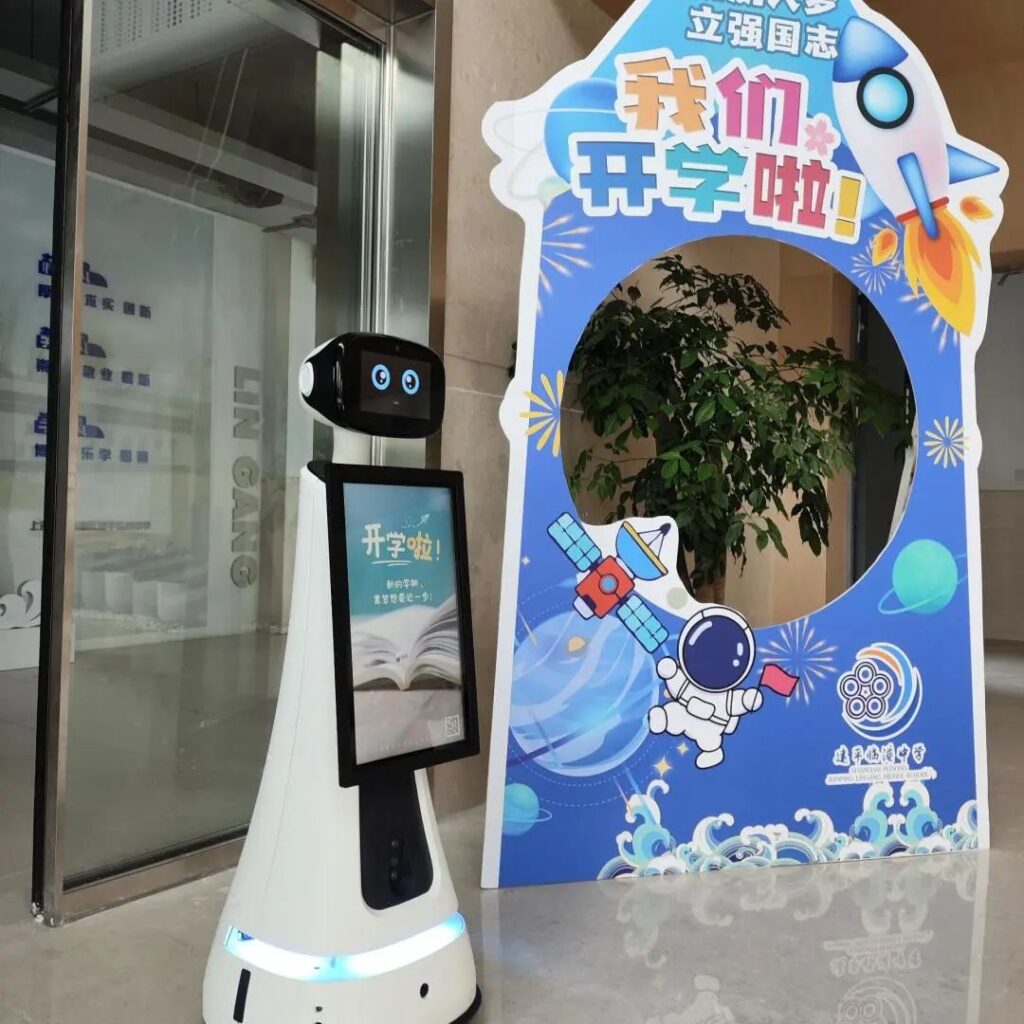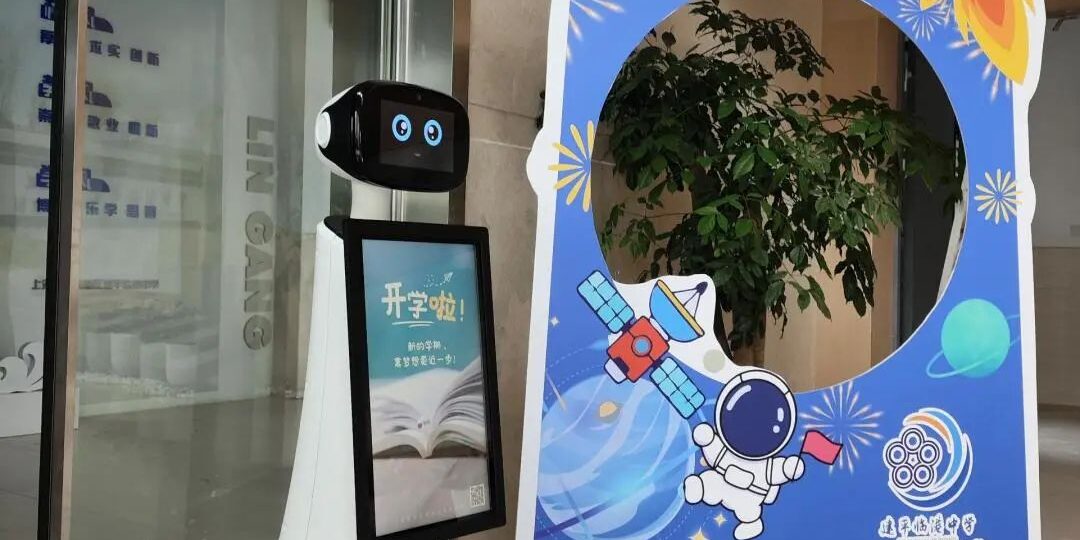Introduction
In recent years, reception robots have become a valuable asset in educational institutions, revolutionizing how schools interact with visitors, support teaching, and enhance student learning experiences. From intelligent information services to teaching assistance and personalized learning, these robots are paving the way for smarter, more efficient educational environments.

1. Information Services and Reception Assistance
Reception robots offer comprehensive information services to visitors, including campus introductions, curriculum details, and event schedules. Equipped with intelligent interactive systems, these robots can answer frequently asked questions from students and parents, providing round-the-clock support and significantly improving service efficiency. Features such as voice interaction and facial recognition ensure a smooth and welcoming experience for all.
2. Teaching Assistance
Beyond reception tasks, robots play an active role in classrooms by assisting teachers with lesson delivery and fostering interactive learning environments. They support self-directed learning and collaborative exploration, encouraging students to engage more deeply with the material. For instance, their ability to adapt to different learning styles ensures that every student benefits from personalized education.
3. Diversified Learning Experiences
Reception robots create immersive learning experiences through lifelike gestures and engaging voice interactions. By doing so, they foster inclusivity and help schools address diverse student needs. These robots make learning more captivating and effective, especially in promoting whole-class participation and bridging learning gaps.
4. Enhancing Technological Literacy
Introducing robots in schools familiarizes students with cutting-edge technologies, preparing them for a tech-driven world. Beyond serving as educational tools, these robots inspire creativity and problem-solving skills, equipping students with essential competencies for future careers.
5. Promoting Teacher-Student Interaction
Reception robots redefine traditional teaching roles, enabling educators to become facilitators of enriching learning experiences. This shift promotes closer collaboration between teachers and students, transforming the classroom into a hub of innovation and exploration.
Core Functionalities of School Reception Robots
- Case Studies and Presentations:
- Robots store and present historical case studies through text, images, or videos. They deliver engaging explanations based on voice commands or manual input, making complex information accessible to all.
- Information Disclosure:
- Robots provide real-time access to school policies, department functions, and updates. They integrate seamlessly with institutional websites to ensure synchronized information display.
- Intelligent Interactions:
- Interactive Displays: Robots feature customizable screens for navigation, service introductions, and consultation options.
- Proactive Greeting: Using microphones and radar, robots detect visitors and initiate interactions with friendly greetings.
- Autonomous Navigation: Advanced mapping capabilities allow robots to guide visitors along predefined routes or dynamically avoid obstacles while navigating.
- Facial Recognition: Robots enhance personalization by recognizing faces, storing user profiles, and verifying identities efficiently.
- Entertainment and Engagement: With high-level language understanding, robots support casual conversations and provide scenario-based knowledge tailored to specific needs.
The Future of Reception Robots in Education
As technology evolves, the functionalities of reception robots will expand, offering even greater benefits to educational institutions. From advanced AI-driven services to broader integration into smart school ecosystems, these robots will play a pivotal role in shaping the future of education.
Conclusion
Reception robots are transforming schools by enhancing service efficiency, enriching the learning environment, and fostering technological fluency among students. Their adaptability and potential for growth make them indispensable tools for modern educational institutions. By embracing this innovative technology, schools can not only improve operational efficiency but also create a more engaging and inclusive environment for everyone involved.
Keywords: reception robot, school technology, educational robotics, personalized learning, intelligent service robots






